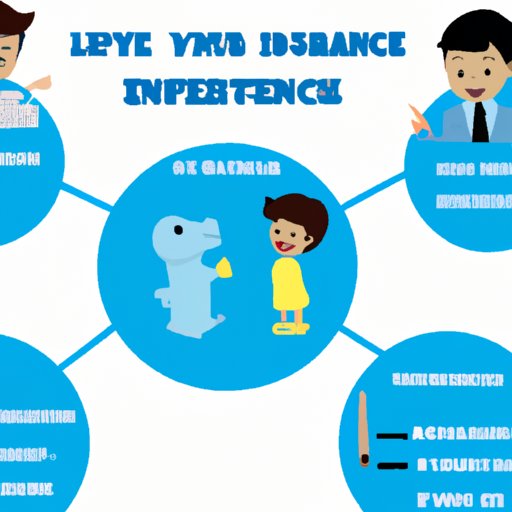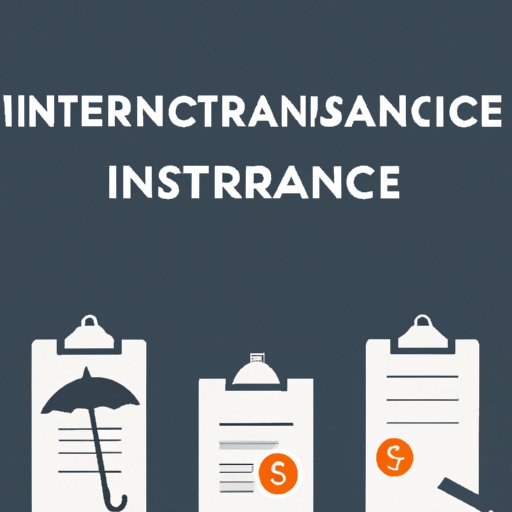Introduction
Investing in insurance companies can be a great way to diversify your portfolio and potentially increase your returns. But it’s important to understand the risks associated with these investments before diving in. This article will explore what investing in insurance companies is, the benefits and risks of such investments, and provide a guide for beginners on how to get started.

Evaluating Insurance Companies as Potential Investments
When evaluating an insurance company as an investment, there are several steps you should take. First, do your research on the company. Look at their financial statements and assess their performance over the past few years. Also, look into any potential risk factors, such as regulatory changes or competitive threats. Finally, consider the company’s track record of paying out dividends.
Once you’ve done your research, you’ll need to analyze the company’s financials. Look at the company’s balance sheet, cash flow statement, and income statement. These documents will give you a better understanding of the company’s financial health and performance. You should also look at the company’s debt-to-equity ratio and return on equity (ROE). These metrics will help you determine if the company is a good investment.
Finally, you should assess the company’s risk factors. Consider the industry they operate in, any regulation changes that may affect them, and any competitive threats they may face. Knowing the risks involved will help you make a more informed decision when investing in an insurance company.
Pros and Cons of Investing in Insurance Company Stocks
There are both pros and cons to investing in insurance company stocks. On the plus side, insurance companies often offer attractive dividend yields, which can provide a steady stream of income. They also tend to be relatively stable investments, as insurance companies are generally well capitalized and not subject to large fluctuations in market prices. Finally, insurance companies typically have strong balance sheets, so there is less risk of default.
On the downside, insurance companies are usually heavily regulated, which can limit growth potential. It can also be difficult to evaluate the value of an insurance company, as the industry is complex and often hard to understand. Additionally, insurance companies often have high expenses, so the returns may not be as high as with other types of investments.

A Guide to Investing in Insurance Companies for Beginners
If you’re just getting started investing in insurance companies, there are a few things you should know. First, you should understand the types of products offered by the company. What type of insurance policies do they offer? Are they primarily focused on life insurance, health insurance, auto insurance, etc.?
Next, learn about the company’s history. How long has the company been in business? What have their financial results looked like over the years? Understanding the company’s track record can help you make a more informed decision about investing.
You should also understand the different types of investments available. For example, some insurance companies offer mutual funds, while others may offer stock or bond options. Knowing the different types of investments will help you choose the one that best meets your needs.
Finally, you should know what to look for in a potential investment. Make sure to look at the company’s financials, assess any risk factors, and compare the company’s dividend yield to that of other investments.

Insurance Company Investment Strategies: What Investors Need to Know
Once you’ve done your research and chosen an insurance company to invest in, it’s important to understand the strategies you can use to maximize your returns. One of the most important strategies is diversification. Diversifying your investments will help reduce your overall risk, as it spreads your money across multiple investments.
It’s also important to understand the fees and commissions associated with your investments. Different companies may charge different fees for their services, so make sure to compare them before making a decision. Additionally, it’s important to understand when to buy and sell your investments. Pay close attention to market trends and news to help you make the best decisions.
Conclusion
Investing in insurance companies can be a great way to diversify your portfolio and potentially increase your returns. But it’s important to understand the risks associated with these investments, as well as the benefits. Do your research, analyze the company’s financials, assess any risk factors, and understand the different types of investments available. Additionally, diversify your investments, understand the fees and commissions associated with them, and know when to buy and sell.
By following these tips and doing your homework, you’ll be well on your way to successful insurance company investments.
(Note: Is this article not meeting your expectations? Do you have knowledge or insights to share? Unlock new opportunities and expand your reach by joining our authors team. Click Registration to join us and share your expertise with our readers.)
